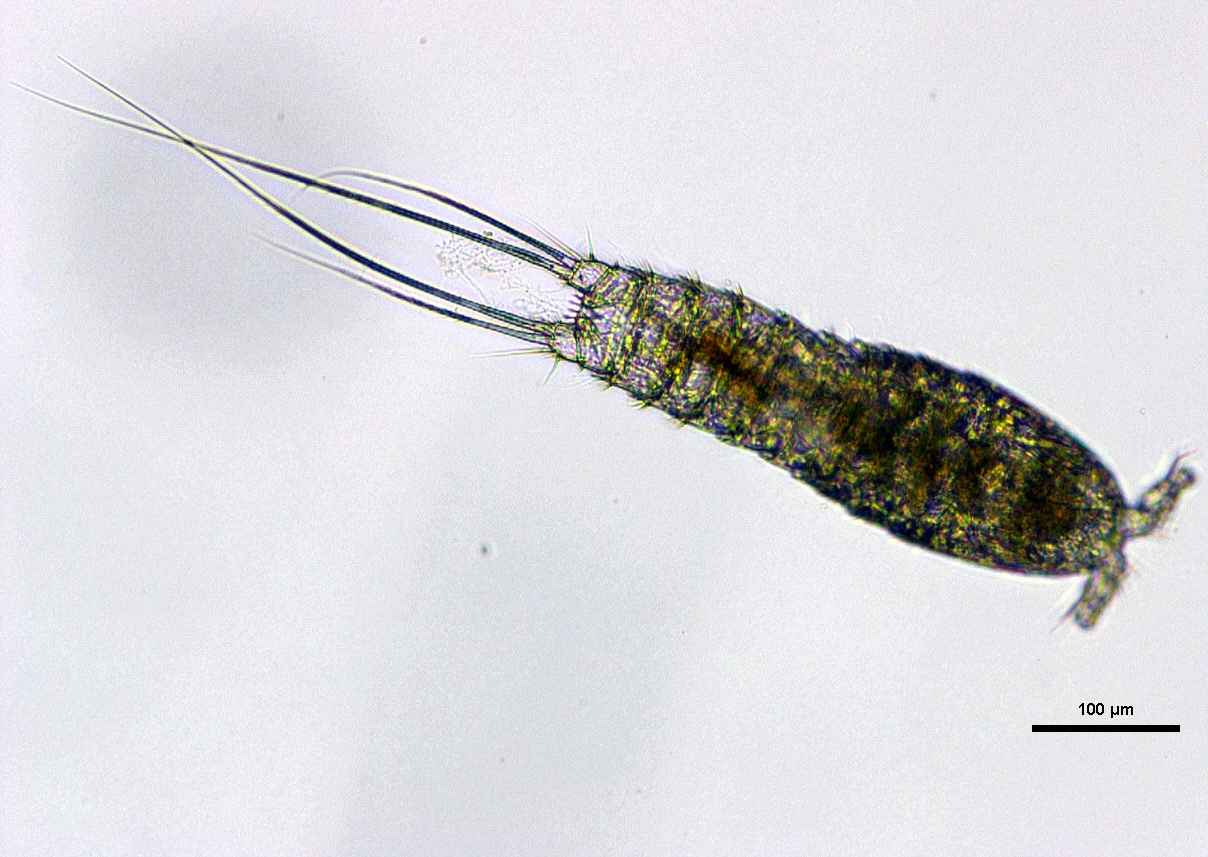Bryocamptus zschokkei
Bryocamptus zschokkei is morphologically a highly variable species, which is recently found in a river site in Western Norway.
Key characteristics
Bryocamptus zschokkei has a rather short body. Its thorax somites are smooth. The exopod in the first four legs has three segments, while the endopod is 2-segmented. In the first leg, the endopod is slightly longer than the exopod, but for the legs 2–4, the endopods are shorter than the exopods. It can be mixed up with B. pygmaeus, however in the legs 2–4, the last exopode segment in B. zschokkei has four spines, in contrast to three spines B. pygmaeus. Its rostrum is short and blunt. The operculum has normally five large spines while caudal ramus has a rectangular shape. The antennule consists of eight segments.
Female: Length 0.50–0.70 mm
Male: Length 0.40–0.55 mm
Ecology and distribution
Bryocamptus zschokkei is morphologically a highly variable species, which is recently found in a river site in Western Norway. It has a Nearctic and Middle Eastern distribution found in a wide variety of habitats (litter, mosses, bogs, springs, streams, rivers, brooks, subterranean waters, under stones, mossy pools, caves, and groundwater and also in the littoral of lakes). Bryocamptus zschokkei is considered as a cold-water species though it is also found in temperate waters. It is most common in neutral, high-oxygenated water.


